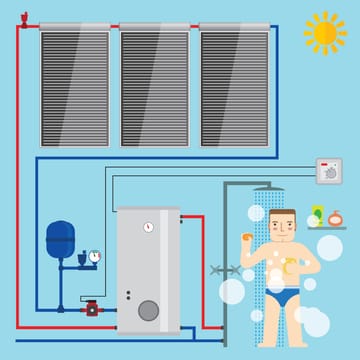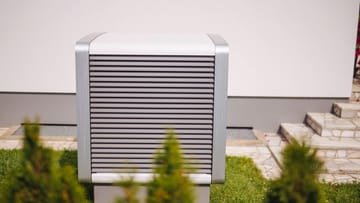Homeowners should now think about how they can avoid high heating bills in the future. These options are there.
The most important things at a glance
Opportunities for self-sufficient heating
You have the following options to warm up your living space independently of public utilities:
- solar thermal
- heat pump
- pellet heating
In addition, there are other heating methods, such as a kerosene stove.
solar thermal
With solar thermal, solar collectors are installed on the roof. They generate energy that is used to heat water that can be used both as domestic water and for heating.
Solar energy is freely available and infinite. With a solar thermal system, you can generate your own heat and are therefore relatively independent of the rising energy costs.
Since the panels can be mounted on the roof, they take up little space. Only the systems for hot water preparation require a sufficiently large space.
Although solar energy is infinite, the sun shines relatively little in winter. So it can happen during a rather rainy period or in the dark season that there is not enough generation to heat the water. This is particularly critical in winter, i.e. especially during the heating season.
Another disadvantage is that the excess heat cannot be fed into the public grid or stored for days with little sunshine. Here, generating electricity with a photovoltaic system has clear advantages.
A solar thermal system should therefore be seen more as a support and thus a reduction in heating costs. Completely self-sufficient heating is difficult, at least in our latitudes.
heat pump
Another sustainable way to heat your home is with heat from the earth, water and air. This works with a heat pump heating system. The condenser inside the device draws in the heat and conducts it past a refrigerant. As a result, the agent evaporates and is collected in a container. The pressure on the gaseous refrigerant is then increased via a compressor. The temperature of the refrigerant increases as a result of the process. With the heat generated in this way, the service water and heating water – often for underfloor heating – are heated in further work steps.
The energy generated by a heat pump is considered clean and sustainable because it uses heat from the surrounding air, groundwater or the ground. In addition, it generates up to 90 percent less CO2 than oil or gas heating.



